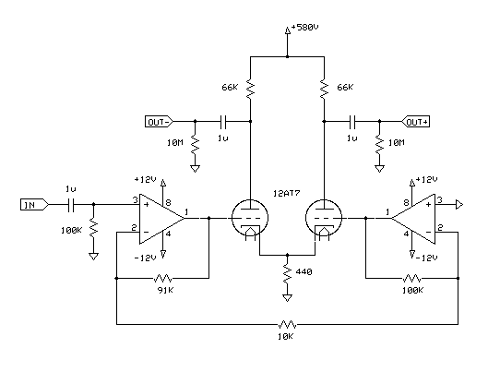wdiabc
100+ Head-Fier
- Joined
- May 7, 2009
- Posts
- 100
- Likes
- 11
Test done under 260V power supply.
basically the 100K load resistor has about 1.3ma idle current in it.
the lower transistor is taking about 4-5ma current( didnt bother to measure it, but its biased with one LED and 240 Re, so about 4-5ma).
Then I adjust the variable resistor of the upper transistor to make the output at 1/2 of Vcc. so the upper transistor is seeing about 2.7ma of current and yet it is a combination of CCS and emitter follower.
I did some tests, absolutely flat FR from 20 - 20K with or without load
loaded with ECR500 ( with is about 100-120pf and i measured my pair of ECR500 is at 50Kohm at 18-20Khz), and with this circuit, the output is clean and did not roll off at 20k! Yet it's done without global feedback.
Now I have a circuit that is dirt cheap, simple to build, gloabl-feedback free and yet a very good performance. I will soon put all the stuff together in a box.
basically the 100K load resistor has about 1.3ma idle current in it.
the lower transistor is taking about 4-5ma current( didnt bother to measure it, but its biased with one LED and 240 Re, so about 4-5ma).
Then I adjust the variable resistor of the upper transistor to make the output at 1/2 of Vcc. so the upper transistor is seeing about 2.7ma of current and yet it is a combination of CCS and emitter follower.
I did some tests, absolutely flat FR from 20 - 20K with or without load
loaded with ECR500 ( with is about 100-120pf and i measured my pair of ECR500 is at 50Kohm at 18-20Khz), and with this circuit, the output is clean and did not roll off at 20k! Yet it's done without global feedback.
Now I have a circuit that is dirt cheap, simple to build, gloabl-feedback free and yet a very good performance. I will soon put all the stuff together in a box.





















